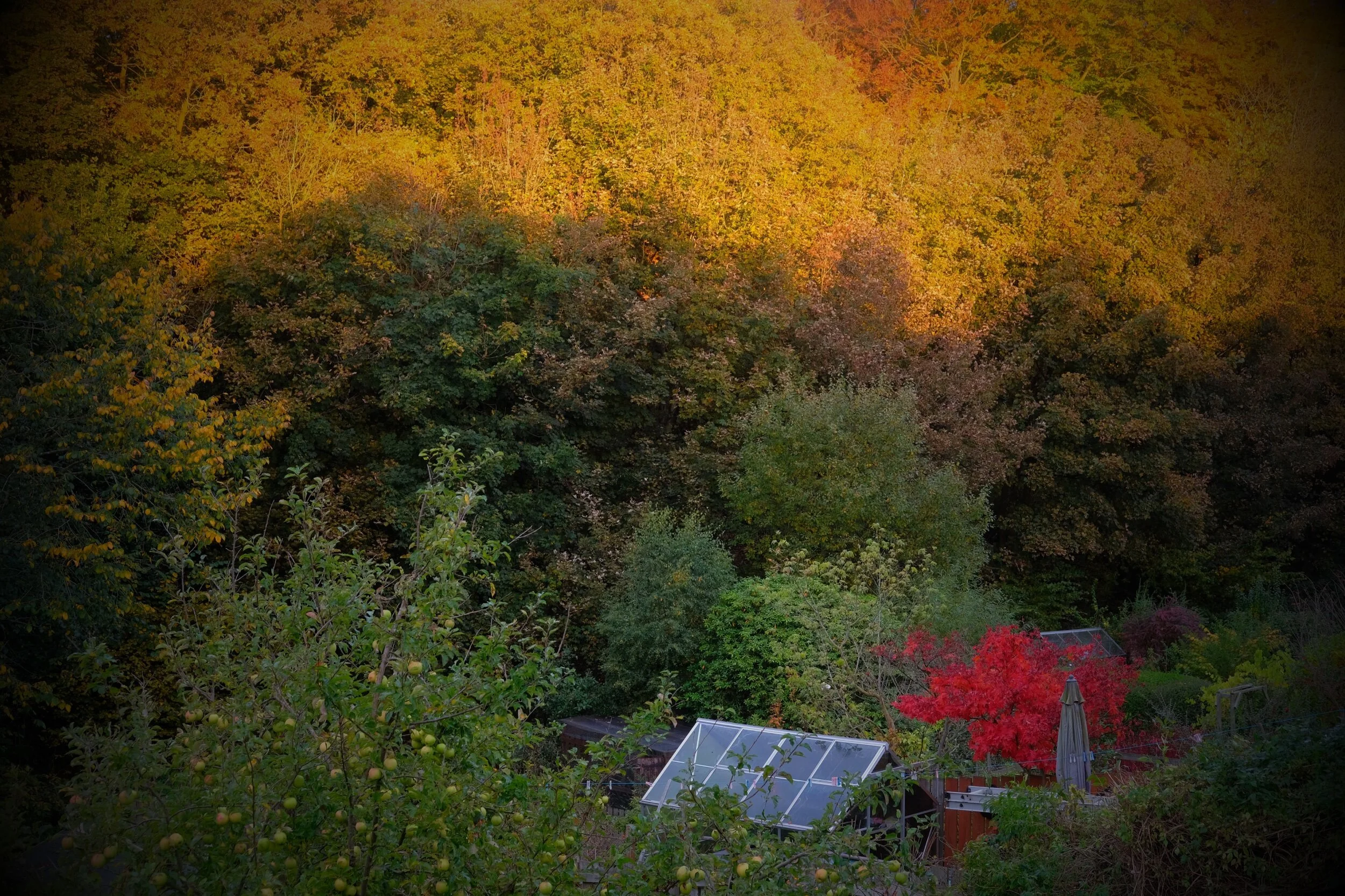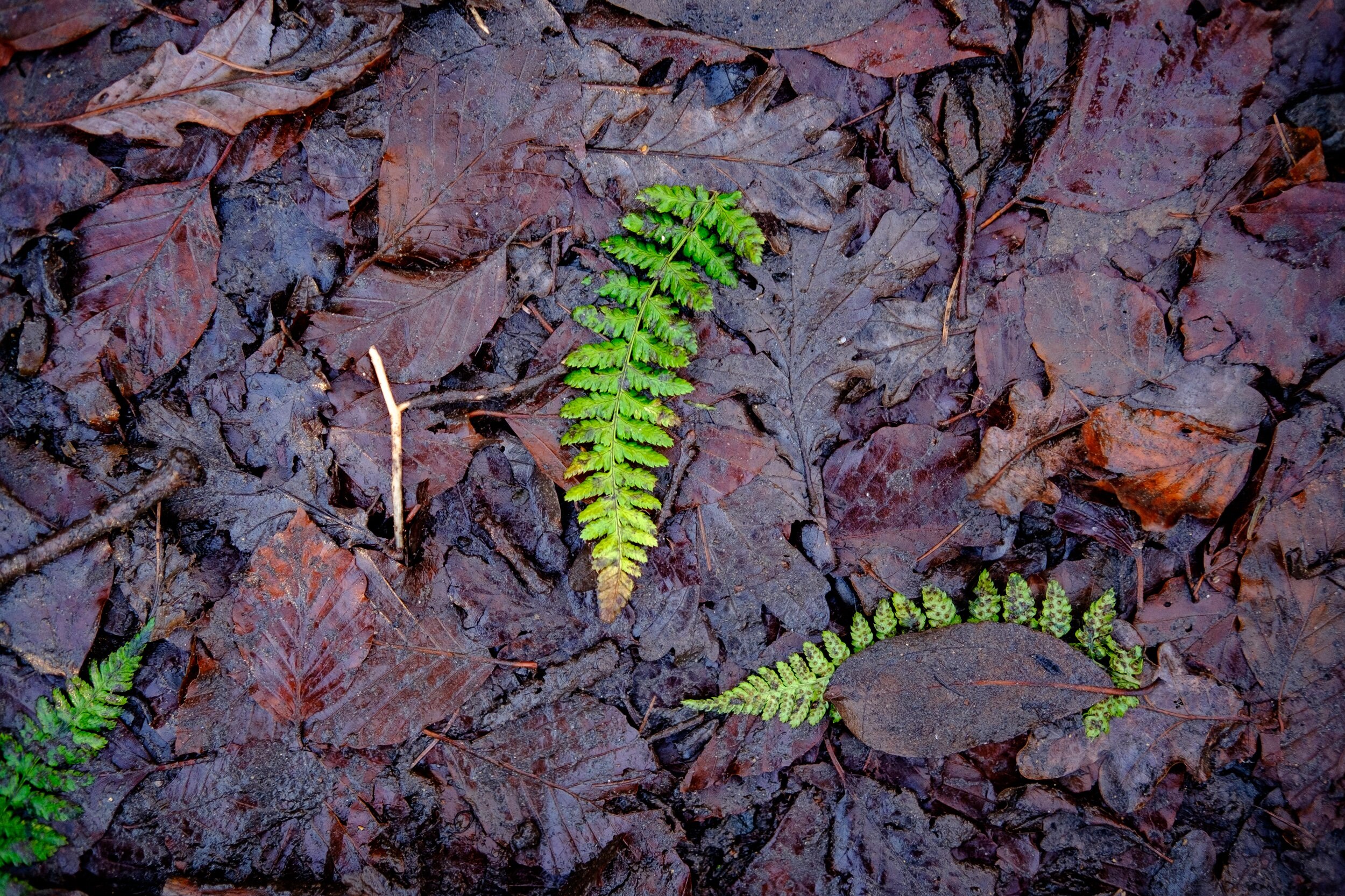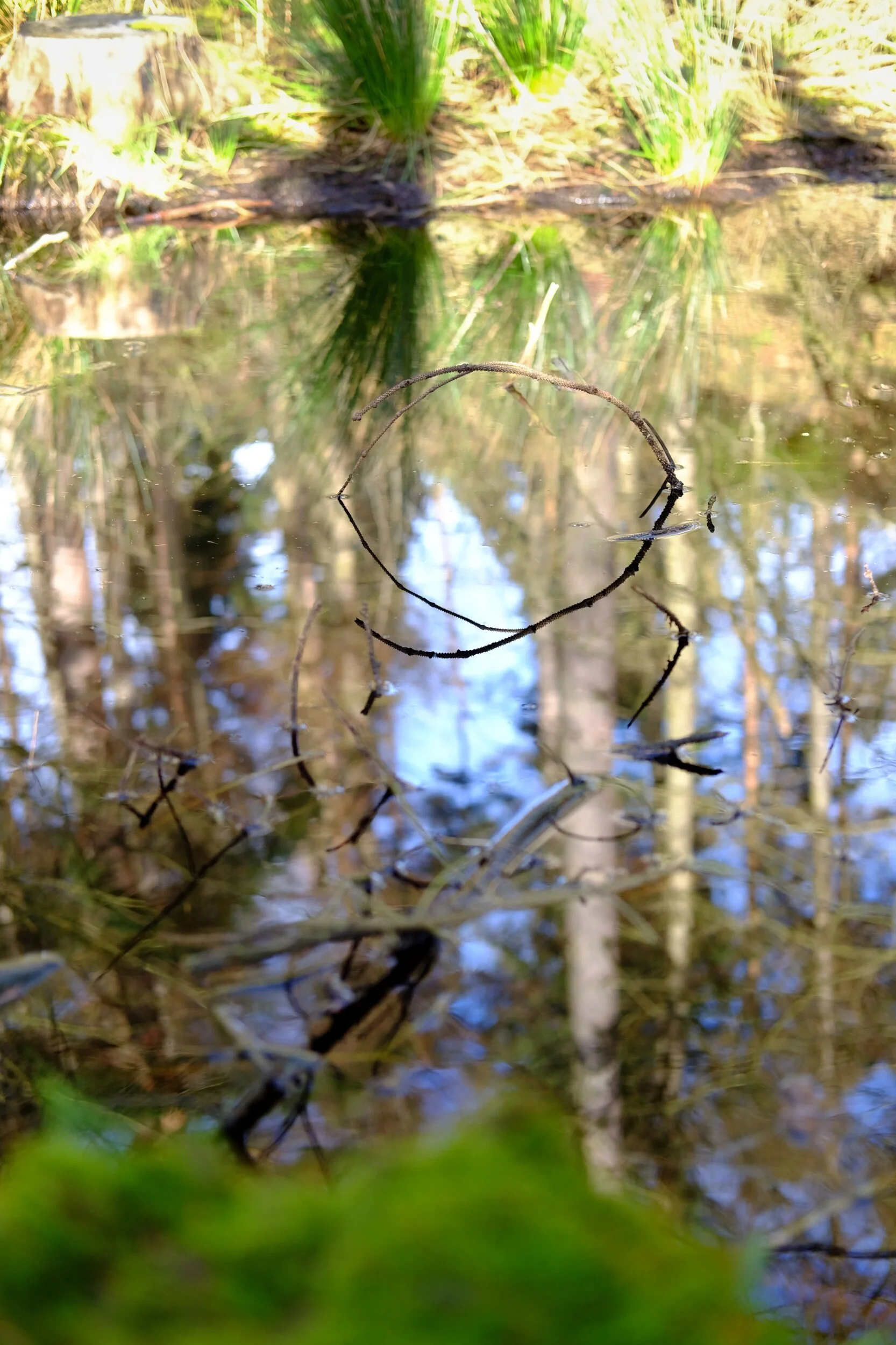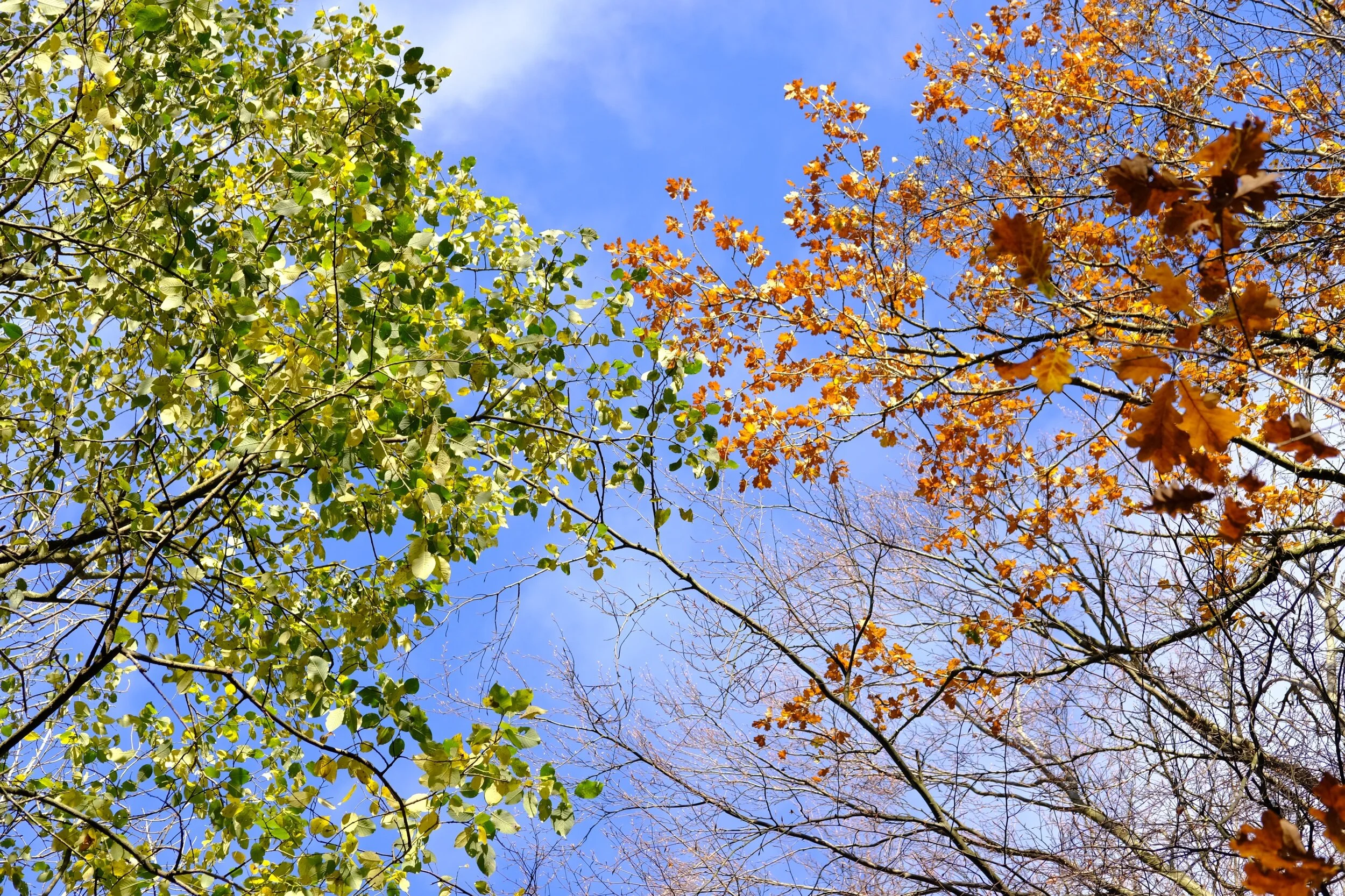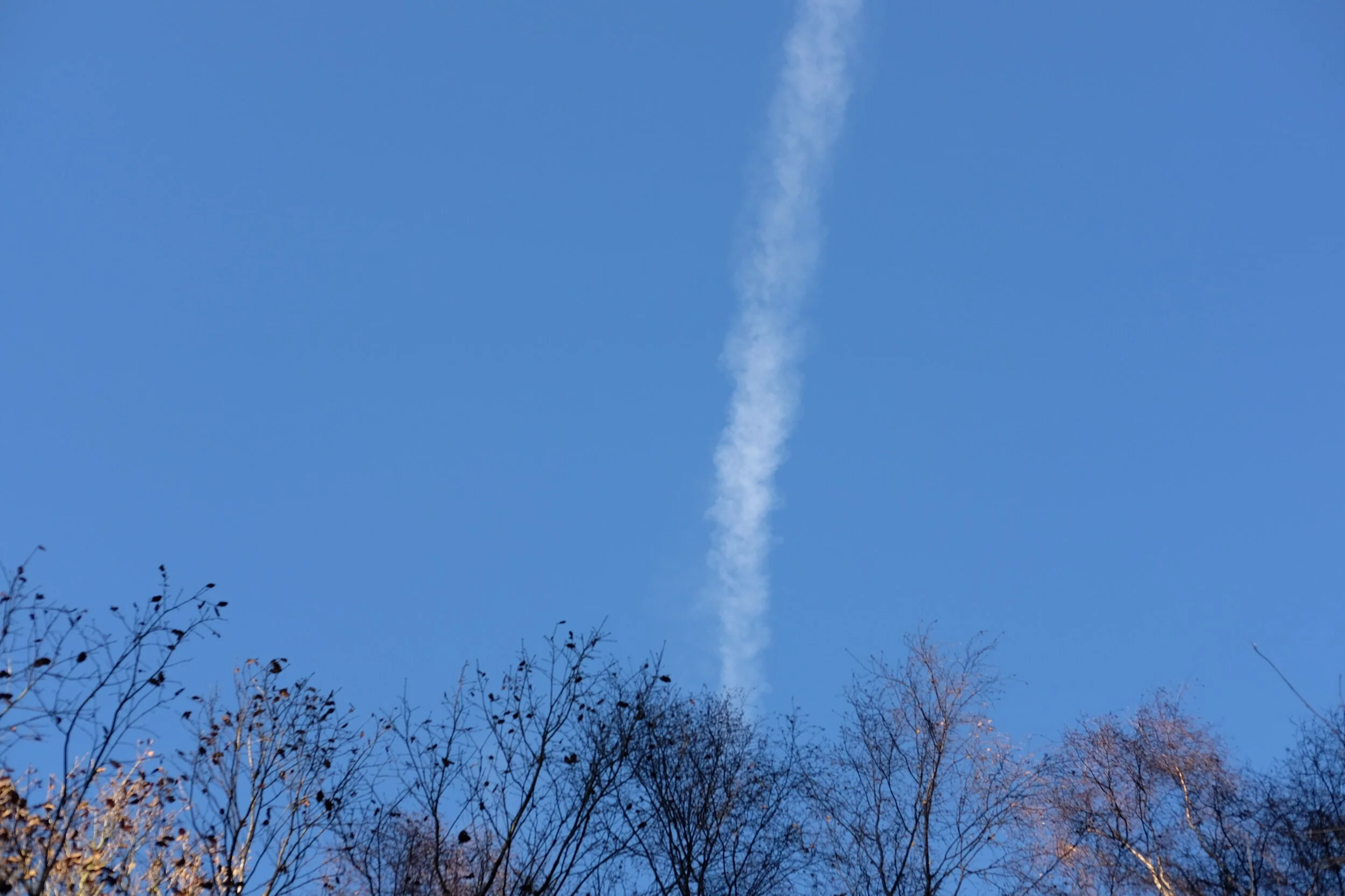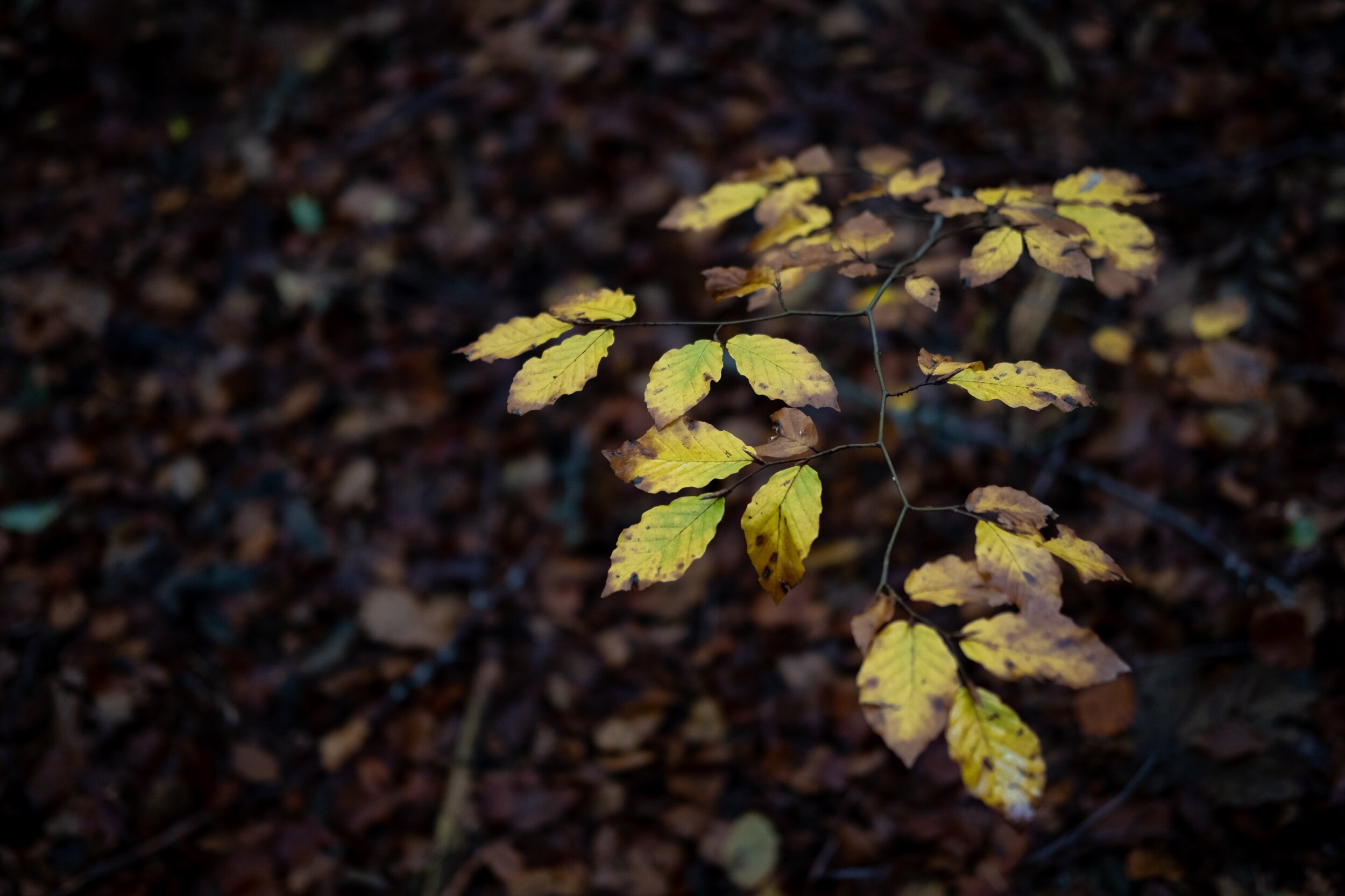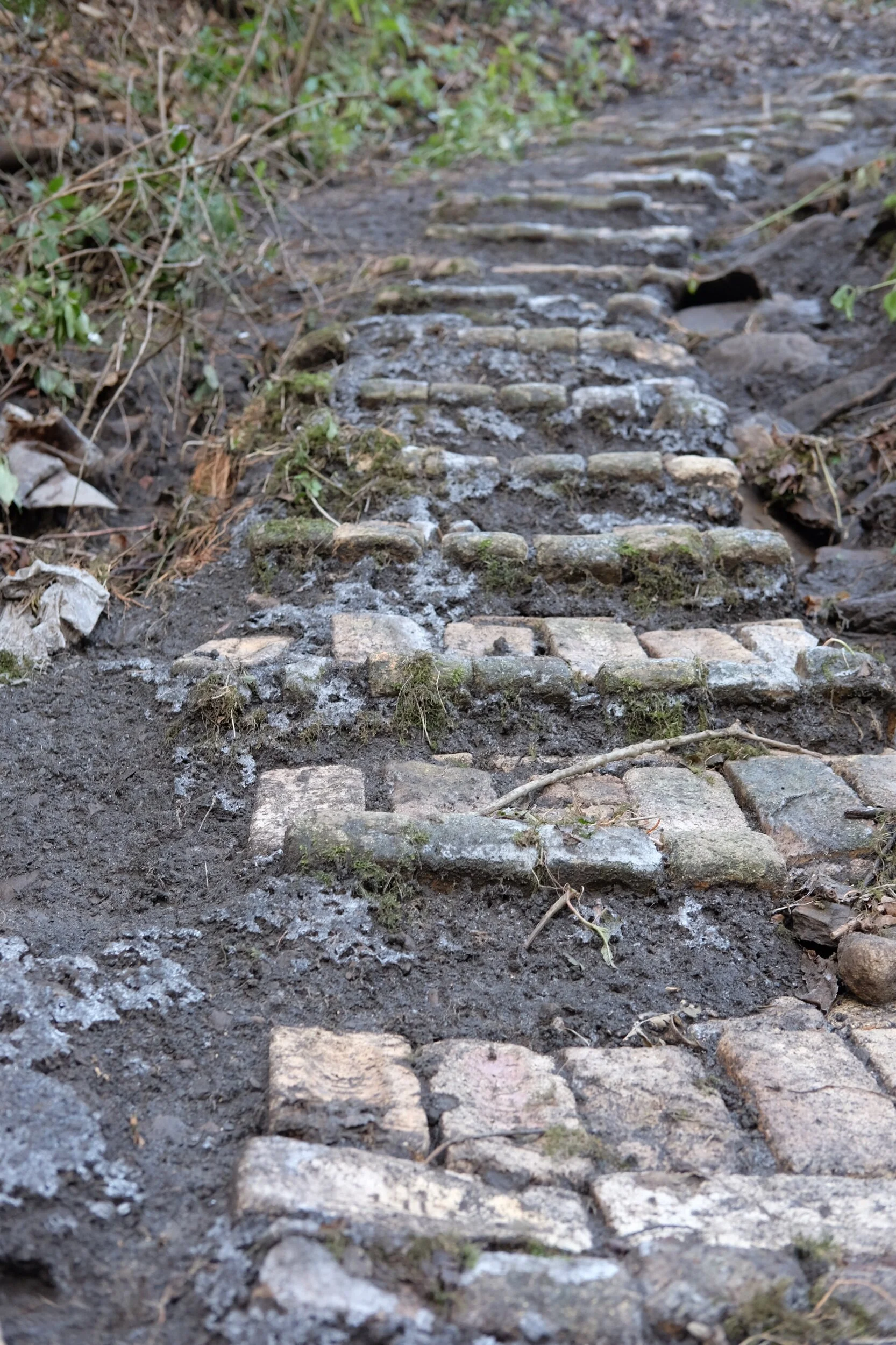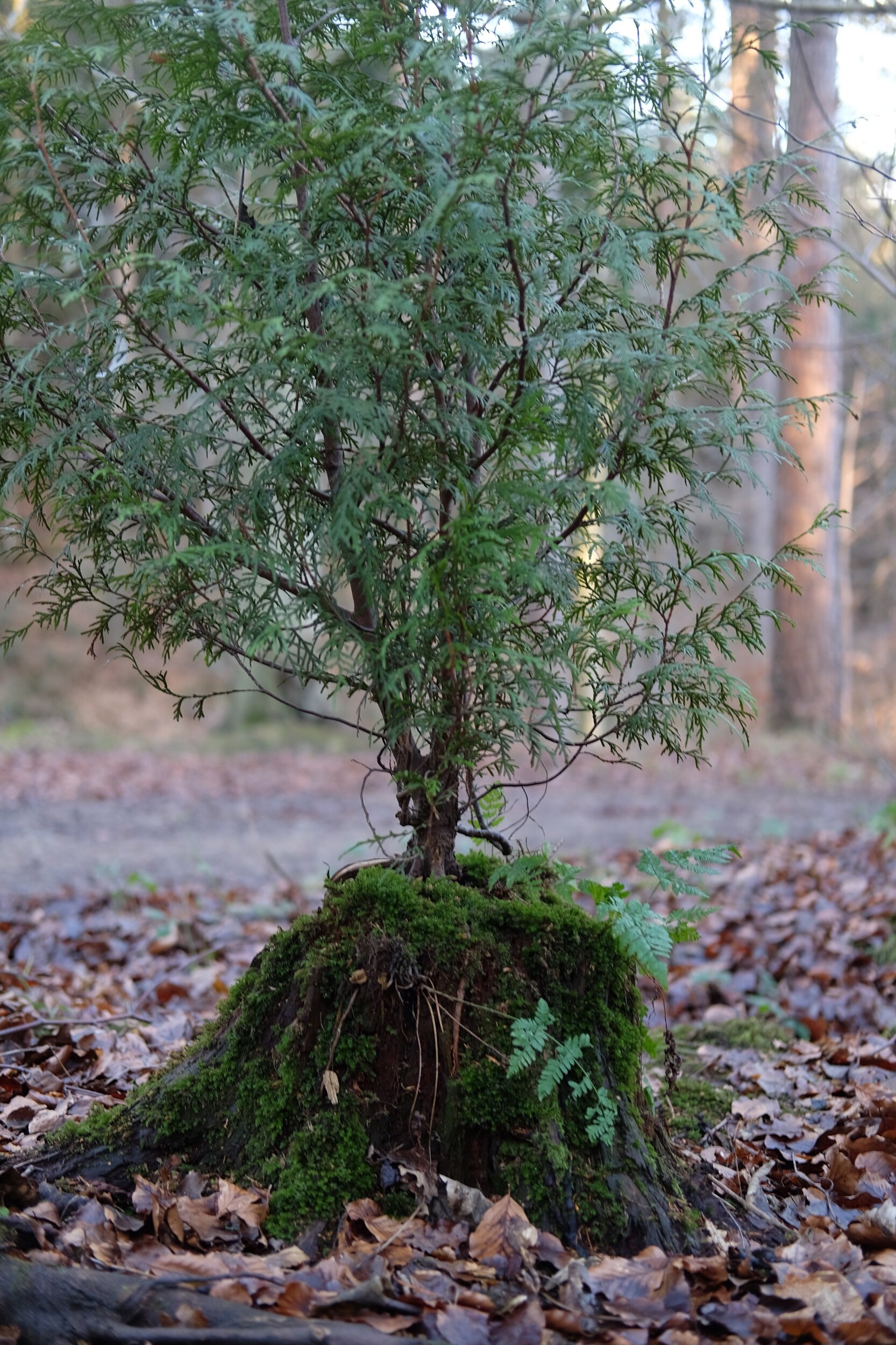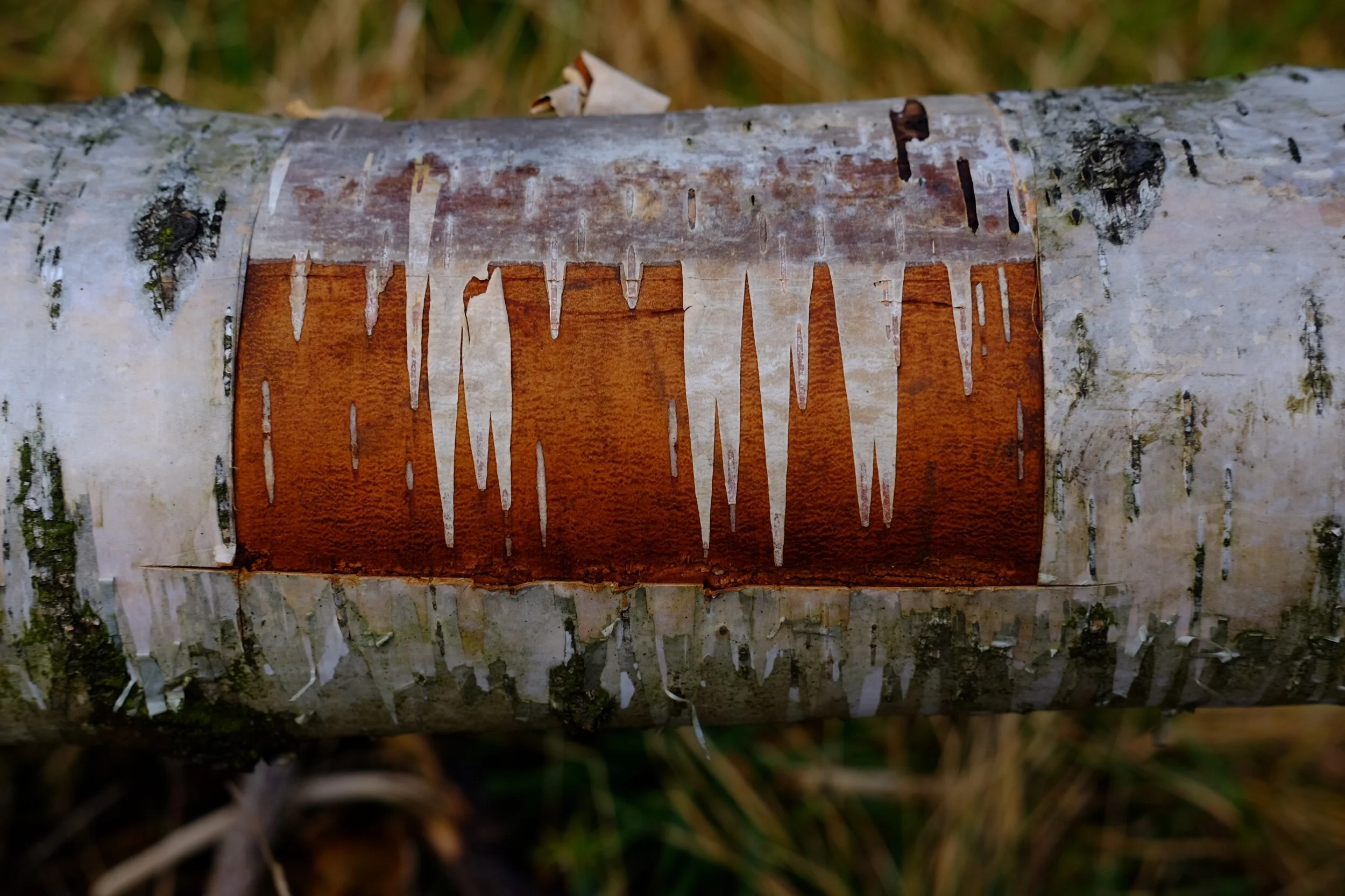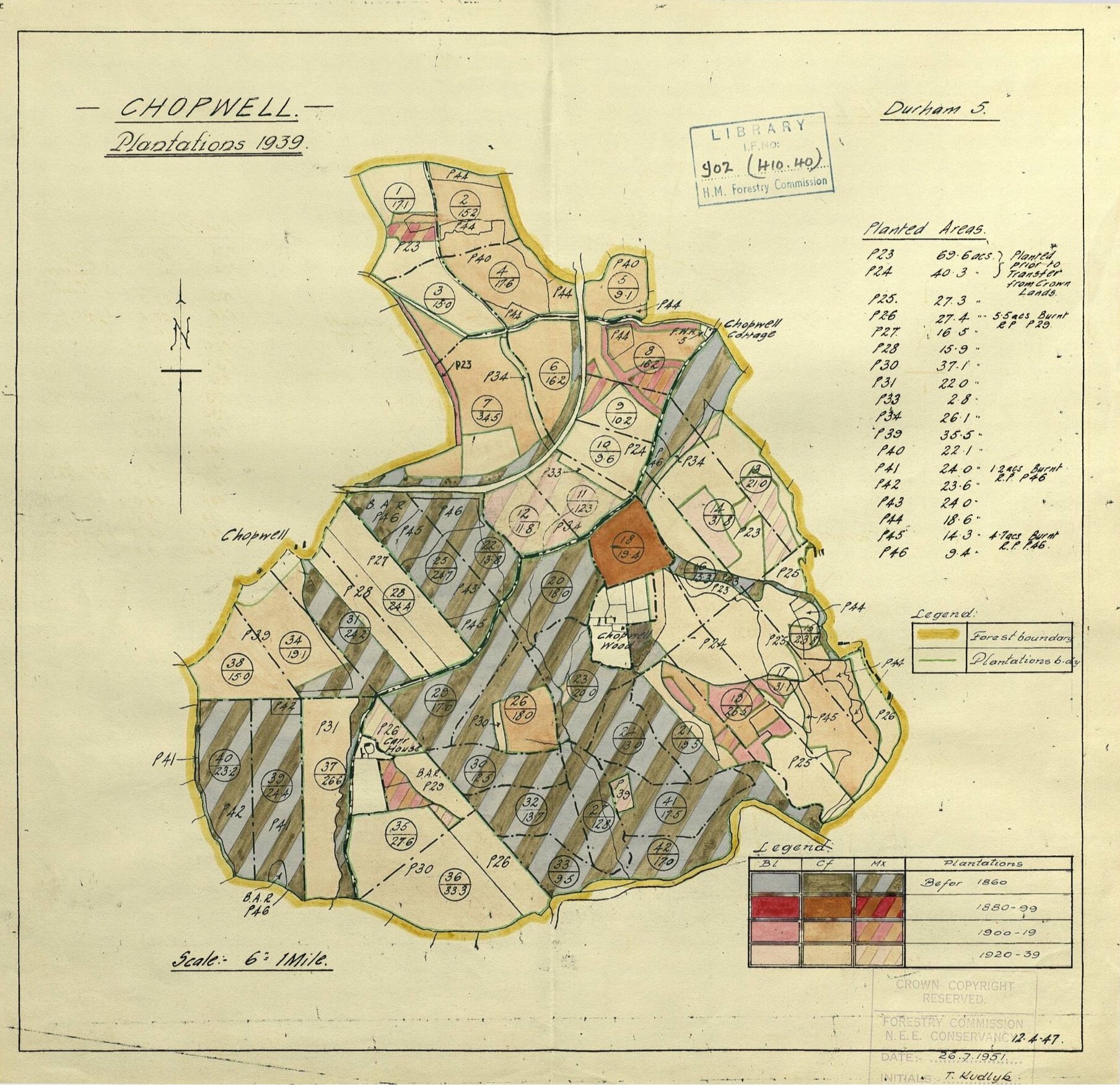Now We Know: Chopwell Harstad Rhine-Neckar
Over the last few years we have met some amazing people while working on 3 WOODS with communities in Norway, Germany, and the UK. Our friend Clive Davis in the UK has come back to art in the last few years, creating dozens of new works in video, performance, photography and participation. We wanted to share one project in particular—‘Now We Know: Chopwell Harstad Rhine-Neckar’—a project Clive made with 26 people from the 3 WOODS network.
People from England, Norway and Germany took part. Clive randomly paired them up, then asked one person to take a photo and the other to describe what they saw – at the same time on the same day and in the same direction. So, while on person was describing, the other person who they were paired with was taking a photograph. This process was repeated, but the other way around of course. Here are a couple of the slides - see the rest on Clive’s website.
Film Phase - In A Strange Place
We spent September and October at our second 2022 residency at Matchbox, in the Metropolregion Rhein-Neckar in central Germany, working on 3 WOODS and its newest output, a video installation called In A Strange Place. We drove 2500km through the region over three weeks to film 65 foresters, forest activists and future foresters performing choreographic dances in the woods. We're still working on the final product - a multi-channel installation - and will let you know when you can see it. Here’s a still from the film phase!
This Planted Place
This Planted Place is a three-channel, 25 minute video installation we created this spring and displayed at the Kommandant’s house in Dilsberg. Lea Gerschwitz wrote a nice essay about the piece, which you can read on the project page for This Planted Place, here.
Here is an excerpt:
“But the calm choreography of these images is disturbed by an increasingly loud audio backdrop, in which the sonorous buzzing of the bees has to compete with man-made sounds. Construction site noise, the squeaking of a saw, an airplane, human voices or sirens accompany the nature shots. Via megaphone a supernatural voice speaks into the forest: "The Heidewald is a cultivated world (...). A confusion on sandy ground." What is this place? What can it be?”
“TREES NEED A UNION” and other updates
Hello friends!
It has been a while since we sent out an update on our activities, so there is a lot to share. As many of you know, in 2020 we initiated a trilogy of long-term, community-engaged art works that investigate inter-species relationships and biodiversity in woodlands in England, Norway and Germany. 3 WOODS is commissioned by Matchbox (DE), Arctic Arts Festival (NOR) and GIFT (UK).
In late-summer 2021 we participated in a virtual residency in Germany. During this time, we created a workshop, billboard series, community gathering, and continued to expand our network of foresters, ecologists, and residents. Our work last year was very much focused on the Heidewald, a small woodland in Maxdorf. During February and March this year we were in residence in Dilsberg. Finally on-the-ground, we visited over 17 municipalities and met with dozens of experts, authorities, and communities. It was AMAZING! At the end of our residency we had an exhibition and open studio. We will share a little bit about all of the work we created for Germany so far.
(Click the bolded titles to read more on their project page!)
We wanted to experiment with how people could expand who they live with. Too often we think of our neighbours as being other humans who live next to us or in our communities. What would it look like if residents of Maxdorf began to imagine the places where we live as being shared with humans and the more-than-human world? This 90 minute project invited people into the Heidewald to meet someone new: a flower, bird, plant, rock etc. They would spend time with this other being finding ways to understand them through simple explorations that were facilitated by a small handbook. After meeting their neighbour they would then introduce this other being to another human.
The Trees Know Something About You
This series of billboard interventions were located throughout the small village of Maxdorf next to the Heidewald. We invited residents to think about their relationships to other species that lived in the woods. In some instances we proclaimed the trees knew something about them—that the trees are observing our human activities. Another billboard encouraged residents to be more like other species in the Heidewald. To “be more aphid” or “be more fox” implies learning new ways of being in the world.
As part of our residency in 2021 we worked with a videographer to capture hi-resolution images of the Heidewald so that we could study the different species that lived in the woods. We quickly realized there was an opportunity to collaborate with some residents of Maxdorf through this process. So we made a bunch of cardboard masks in our home studio in Calgary, flattened them, and mailed them to Germany for locals to wear as part of the video. At the same time we put out a public call for residents to send us haiku about the Heidewald. These haiku were compiled with conversations we had with people and our own research to form the text in the video. This Planted Place is 75 minutes of footage shown across three different screens. Click the link here to watch an excerpt.
Our exhibition at the Kommandant’s House in Dilsberg included the installation of This Planted Place and an open studio. It was important to us that we share our process and thinking with people within our German network and residents who visited our exhibition. So we had an open studio. It included four framed collages that mirrored actual tree rings that we had photographed of cut trees. To mimic the cutting of the trees, we cut up our research, brochures, and other printed materials we had collected over the last two years. The collages were thematic: tourism, animals, Heidewald, and Odenwald. Alongside the collages was a poster-within-a-poster that included marginalia reflective of our thinking and research. The poster demands: “TREES NEED A UNION” and “HUMANS WILL LIVE THE WORLD OF OUR INTERSPECIES DREAM”. We also offered a small self-directed listening exercise that people could do in the nearby woods.
A Chorus of Ideas
You are invited to join Canadian artists Mia + Eric for an afternoon of public reading. A Chorus of Ideas is kind of like a book club. But in the woods. Where we read in groups. Just sit and read. Aloud or to yourself. What effect will our voices have in the woods? Can we change our relationships with other species by practicing new ways of being in the woods? Do our voices collectively signal to the deer, fungus, and nuthatch we are willing to do better? Can we prove to the spruce that their transformation from forest to paper matters? Are we willing in to think strangely about ourselves and the woods?
Each participant will be given a copy of a short book and a pencil for note taking, underlining, and highlighting. We will provide snacks and (hopefully) tea. This is an outdoor event so dress appropriately.
Saturday April 23, 2022, 1pm - 4pm: The Democracy of Species, by Robin Wall Kimmerer
Saturday May 21, 2022, 1pm - 4pm: All Art is Ecological, by Timothy Morton
We will meet at the main Chopwell Wood car park.
Registration is now closed.
Meeting Walter Gramlich
As part of our residency in Maxdorf, Germany, Matchbox interviewed local ecologists and the Mayor as a way of introducing us to the Heidlewald. In these short videos, we learn about the different local biodiversity initiatives that are taking place in the area, the history of the Heidewald, and the importance of the surrounding meadows. These videos give you a glimpse into how we are building a network of local experts who will contribute to the creation of 3 WOODS in Germany.
Walter Gramlich
The Heidewald is very much a human built landscape. Over centuries locals drained wetlands, planted trees and then harvested them, burned beetle infected pines, and even grazed sheep. Ecologist Walter Gramlich knows this history and the current state of the woods well. For 30 years he sat as chairman and co-founder of the Heidewald chapter of Naturschutzbund Deutschland eV (NABU)—a nature conservation organization. In this introductory video Walter discusses the history of the Heidewald, the geological features that make this area unique, and the eventual introduction of Robinia trees in the mid-19th century. Now a naturalized species in the area, the Robinia has become a cultural asset for Maxdorf. Through the efforts of NABU and conservationists attempts at repurposing the land have been halted and newer micro-landscapes have been introduced for insect and amphibians.
We ask Walter: what can residents of Maxdorf do to build relationships with the non-human world in the Heidewald?
Meeting Petra Jörns
As part of our residency in Maxdorf, Germany, Matchbox interviewed local ecologists and the Mayor as a way of introducing us to the Heidlewald. In these short videos, we learn about the different local biodiversity initiatives that are taking place in the area, the history of the Heidewald, and the importance of the surrounding meadows. These videos give you a glimpse into how we are building a network of local experts who will contribute to the creation of 3 WOODS in Germany.
Petra Jörns
Petra Jörns is a biologist and works in biotope management, she is in charge of nature reserves in her home county for the state of Rhineland-Palatinate for over 25 years. As a biologist, she is the project manager of a project called “Insel der Artenvielfalt” (ENG: Island of biodiversity) that cares for local biodiversity in the little town of Rödersheim-Gronau, not too far from Maxdorf (about 10km to the south). “The project was one from 40 winning ones at the competition “Naturstadt – Kommunen schaffen Vielfalt” (ENG: Nature City - Communities Create Diversity), which is carried out by the alliance "Kommunen für biologische Vielfalt e.V." (ENG: Association Communities for Biodiversity) and is funded by the Federal Agency for Nature Conservation with funds from the Federal Ministry for the Environment, Nature Conservation and Nuclear Safety as part of the Federal Program on Biological Diversity. The alliance "Kommunen für biologische Vielfalt e.V." is an association of municipalities engaged in nature conservation. It strengthens the importance of nature in the immediate living environment of humans and puts the protection of biological diversity in the spotlight.”
Petra is also an author of numerous science fiction and fantasy books.
In the interview we asked Petra two important questions:
Insects are a very important part of the interconnected relationships that keep natural systems in balance. But many people have negative perceptions of insects- they might be afraid of them or think insects are disgusting or even dangerous. How do you think cultural feelings about insects have shaped conservation efforts? How can our relationship with insects be repaired?
As an author of many science fiction novels, what role do you see stories playing in our collective visions of the future?
See her responses in the video.
Meeting Thomas Hebich
As part of our residency in Maxdorf, Germany, Matchbox interviewed local ecologists and the Mayor as a way of introducing us to the Heidlewald. In these short videos, we learn about the different local biodiversity initiatives that are taking place in the area, the history of the Heidewald, and the importance of the surrounding meadows. These videos give you a glimpse into how we are building a network of local experts who will contribute to the creation of 3 WOODS in Germany.
Thomas Hebich
Thomas Hebich is the chairman of ArtenErben in Maxdorf. ArtenErben is dedicated to the field of biodiversity, focusing on preserving local species of plants and animals. The organization takes on important projects like converting boulevards into biodiverse corridors for multiple species, transforming household gardens, planting wildflower meadows on municipal properties, and creating insect habitats.
Thomas Hebich is also a member of the Green Party in Maxdorf.
The work of ArtenErben aims to restore balance between human and the more-than-human worlds. We asked Thomas: How does a community’s understanding of itself change when space is held for other species to flourish?
Meeting Michael Seiverth
As part of our residency in Maxdorf, Germany, Matchbox interviewed local ecologists and the Mayor as a way of introducing us to the Heidlewald. In these short videos, we learn about the different local biodiversity initiatives that are taking place in the area, the history of the Heidewald, and the importance of the surrounding meadows. These videos give you a glimpse into how we are building a network of local experts who will contribute to the creation of 3 WOODS in Germany.
Michael Seiverth
For several generations Michael Seiverth’s family have kept bees. His colonies are one of many that visit the Heidewald each spring so that they can collect nectar from the Robinia forest and wildflowers in the meadows. Maxdorf is famous for its’ honey production, largely because of the Robinia that were introduced from North America over a century ago.
Bees are critical to the production of ecological systems that support the co-existence of multiple species. We asked Michael, what can humans learn from bee culture to build new relationships with each other and other species?
Meeting Mayor Werner Baumann
As part of our residency in Maxdorf, Germany, Matchbox interviewed local ecologists and the Mayor as a way of introducing us to the Heidlewald. In these short videos, we learn about the different local biodiversity initiatives that are taking place in the area, the history of the Heidewald, and the importance of the surrounding meadows. These videos give you a glimpse into how we are building a network of local experts who will contribute to the creation of 3 WOODS in Germany.
Orstbürgermeister (local mayor) Werner Baumann
It is really wonderful that Maxdorf City Council is so supportive of 3 WOODS. We have met a few different councillors so far. Our first introduction was to the Mayor of Maxdorf. Mayor Baumann has had family in the region for generations. In the video he shares a sculpture that once stood in the Heidewald (you’ll have to watch to learn more!). Mayor since 2009, Mayor Baumann sees Maxdorf as being situated between work and recreation — meaning Maxdorf is sandwiched between larger cities and different woods, including the Heidlewald and the much larger Palatinate forest. We continue to be impressed by local leaders in the Rhein-Neckar Region who are well versed in their local ecologies and the need for biodiverse landscapes. In this video Mayor Baumann explains the importance of the Heidewald for both human and non-humans alike.
In the video we ask him about other “governing” structures in the area such as the hierarchy of bee colonies.
Beautiful Images from Chopwell
We were so happy to receive these images from multi-disciplinary artist and resident of Victoria Garesfield, Clive Davis. These images are beautiful studies in light, colour, and reflection in Chopwell Wood. Clive has lived next to Chopwell for a long time and regularly visits the woods. His practice combines photography, video, performance and is at times very collaborative. A couple of months ago we brought Clive together with another artist from near Chopwell Wood, Jane Gower, and German-Norwegian artist from Harstad, Beate Bader to start a conversation about their art practices and relationships to their local woods.
Rethinking walking, finding, and collecting
Over the past couple of months we have been thinking a lot about the role walking, finding, and collecting plays in our creative process. It is often the very first thing we do when arriving in a place. We drop off our bags at our hotel or studio, throw on our binoculars and immediately leave to get lost in the landscape. We have walked in parks, down back lanes, into river valleys, through empty lots, along canals and into forests. We have collected pictures of local plant species, political advertisements, the scent of wet soil, animal pathways and the sound of birds new to our ears. This type of embodied experience has historically taught us something about where we are. Over time we begin to develop a catalogue of natural ephemera, local systems, archival materials, stories, etc. These things start to create narrative threads that we can tug at. What does it mean that at 9:30 in the evening we hear a particular bird singing amongst a thicket of birch in a ravine? Is it signalling the end of the day, waking up nocturnal species, or intentionally calling predators to their location as a red herring before silently slipping away to a safe place to roost for the night? Is that same thicket of trees planted or naturally occurring? And what human systems are intersecting or effecting this world (all, obviously!)? Are the trees pruned by an arborist or left to grow uninhibited by direct intervention? Is this thicket a resource for a human industry or is it ignored? We ask: who or what else has a relationship with these trees? What happens if we start with the thicket and the birds at the centre of our exploration and work our way out? What networks will we discover and what new relationships can be created by understanding the relationships between species and geography?
Submission from Germany
Not being able to travel because of COVID-19 has made our typical process for 3 WOODS different. Our walking, finding, and collecting has been facilitated by new friends and collaborators on the ground in Norway, Germany, and the UK. Starting last year we asked residents to participate in a woods-based assignment and to send us photographs, audio recordings, videos, archival materials and texts. These have been published on the 3 WOODS website and have been invaluable to our understanding of the woods in each location.
More recently, we have had the pleasure of walking through Folkeparken via Zoom and some curated photo series. It’s not exactly the same as being there, but it works! We have been able to learn about the topography, better understand the distances between landmarks, get a sense of the transition between native birch sections of the woods and the spruce plantations. We can hear the sound change as you move from one section of the park to the another. We are learning about the height differences between the two types of woods, what can (or can’t) survive in the shadow of the spruce, and that marsh marigold is abundant in certain locations.
Anyhow, we wanted to share some screen grabs from a few recent walks and maps that Mia drew live as we moved through the woods. Thank you to Ragnheiður, Roald, Øystein, Mona, and Honna for guiding us. Your generosity is helping move 3 WOODS forward. We are indebted.
Walk with Roald
Walk with Beate
Recent Public Assignment Submissions
Over the course of the last year we have been inviting residents who use Folkeparken (NO), Chopwell Wood (UK), and the Palatinate and other smaller woods in Germany’s Rein-Neckar Region to send us images, writings, sounds, videos and other material that represents their experience in the woods. Here are some recent submissions we have received.
The Scent of Soil - Submitted by Oisin (UK)
The 21st March 2020 was the equinox and meant to be such a positive day as the official first day of Spring. However, it ended up being one of my darkest days, as I heard in the morning that the best man at my wedding (and vice versa) had died at home after a long illness and I went down with my first symptoms of Covid 19 later that evening.
Roll on seven weeks and I was slowly recovering from the virus and trying to restore my strength and fitness. After a whole month indoors, I was starting to go for short, slow walks and enjoying brief exposure to the local woods. On one warm and quite humid afternoon in early May, I was strolling through the oak woodland and stopped for a while to enjoy a very familiar smell.
The rich, organic and earthy smell had been triggered by some spots of rain that day. I already knew that it was caused by a special type of filamentous bacteria (actinobacteria) in the soil, in much the same way as the smell of sea that we all love is also caused by a mixture of chemicals from the activities of bacteria, algae and other organisms on the sea shore.
When I checked the internet to learn more about this smell, I was delighted to find that it has its own word – ‘petrichor’. This etymological journey of discovery was an adventure in itself. The word was created by two Australian scientists in the 1960s, who named the smell from two Greek words – petra (stone) and ichor (the fluid that flows through the veins of Greek gods). The main chemical is geosmin, which is released from the soil in small aerosol droplets with the onset of rain under certain conditions and can be detected by the human nose in concentrations as low as 5 parts per trillion! This is possibly due to the evolutionary importance to our ancestors in needing rainy weather for survival.
The whole experience of smelling the petrichor and discovering more about it, was a most welcome escape from the bleakness of the previous weeks and one that I will remember for a long time.
Only yesterday, I heard the soundtrack of the award-winning film Nomadland, which had a track called ‘Petrichor’, so this word will probably become well known to many of us quite soon and will be a welcome reminder of the beauty of hidden nature around us.
Mapping Chopwell Wood
We had heard from numerous locals that finding a map of Chopwell Wood is difficult and that directional signage in the woods is sparse. There are official maps of the woods. Friends of Chopwell Wood have published a good pedestrian map and there are beautifully illustrated maps from late 19 century to mid-20th century that we look at a lot.
1899 - Chopwell Plantation (from Forestry Commission)
1919 - Chopwell Plantation (from Forestry Commission)
1939 - Chopwell Plantation (from Forestry Commission)
1951 - Chopwell Plantation (from Forestry Commission)
In April, our artist friends Jane Gower and Tony Scandrett took us for a couple of video walks through the woods. Inspired by an annotated map that Jane and Tony made, Mia drew our walks live, mapping the route as best she could without being on the ground. A strange type of cartography emerged that is part location-based and part speculative error.
April 7 - A walk in Chopwell Wood with Kate, Jane, and Tony
April 15 - Chopwell walk with Jane & Tony
Update: we recently did a talk with Jane and Tony as part of GIFT Exchange and discussed the lack of maps for Chopwell Wood. Debbie who was in the audience asked if could email her a link to a map only to changer her mind. She says: “thanks for the offer of maps - I would like to see them but after the discussion today, I might forget them afterwards. I realise that I associate the woods with not having to hurry in case I get lost - so I will walk home from school with the kids through the woods but I don't walk through the woods to pick them up in case I'm late. I think I would like to keep the association with having time to get lost.”





